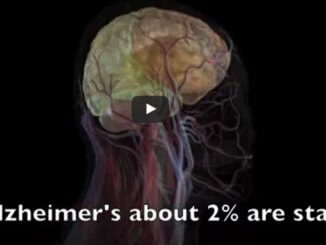Interactions between players and community building
Even more excitingly than what players had learned about RNA from the game, we had not envisaged just how much education and instruction would be going on between the players.
“…playing Eterna has taught me a little about RNA just from working puzzles, and many players in the community openly share and teach in-game what they know and what they have learned about folding RNA.” (Lee Bickle)
“Personally, I maintain on my profile page many links to papers that the more science orientated may be interested in reading. Like the other players, I post informative pictures to promote better understanding within the game, especially for newbies but also for advanced players to consider.” (Chris Couteau)
What if player teaching and education weren’t the only un-envisaged factors to come out of Eterna though? What if players began to bring their own unique skills to the party and to start to alter and develop the very nature of the game? Fantastically, this is already starting to happen.
“My greatest achievement is most likely the recent help in getting the scripting interface discussion really moving and bringing software tools sets to their attention to aid the porting of software to JavaScript. As a result some of the Vienna RNA software suite has been ported to JavaScript…I have helped establish contacts with the VARNA[3] team to facilitate porting their graphic display software from Java to JavaScript as well, though the follow through has yet to occur as much.” (Chris Couteau)
“I could say that I have some reasons to feel relatively proud of having written a software capable of playing and competing with human players in this game (the bot is currently ranked 30 th ).” (Nando)
There is an argument that the term ‘player’ no longer fits these individuals, but that ‘scientist’ isn’t quite right either. It seems as if they are starting to occupy a grey area somewhere between player and developer. There is a level of creativity and drive here that Eterna seems to have drawn out, and which is contributing to the further development of the game in a way that we imagine the developers could never have predicted. So how do the developers feel about this. Is there a concern that the players are overstepping certain boundaries and tinkering with things that they shouldn’t be playing with? On the contrary; it appears that this is a development that designers actively welcome. Indeed, they hold biweekly development meetings with players to discuss thoughts, ideas and updates to the game.
One of the strongest indications to come out of the development work described above, and the obvious instruction and education that goes on between players, is the strong sense of community that exists between the top game players, and how much of the appeal of playing it is social, which will of course foster collaboration and creativity, particularly in an environment that appears to be entirely non-judgemental and cooperative.
“Most of my success in the game is owed to other players who have spent much time and effort analyzing, compiling, & documenting what they’ve learned and engaging in dialog with me about the game.” (Lee Bickle)
Conclusions
To return to our original question, what constitutes a scientist, and are the Eterna players challenging this concept? It could certainly be argued that the players possess many of the attributes that define research scientists. They are adept at recognising patterns and display formidable problem solving skills. Perhaps even more importantly, they also display a devotion to what they do that sometimes seems to border on the obsessive. However, perhaps what we’ve really learned in speaking to the players is just how reductive our original question was. In fact, maybe this is where the true innovation of Eterna lies: In realising that the traditional reductionist approach, where we would think that the only people qualified to undertake research are conventionally trained scientists, is not the only way to go about things, and in having the foresight to design the tools to take advantage of a previously underutilised workforce. In the end, it doesn’t really matter what attributes Eterna players have, and whether we should consider them as scientists or not (for the record, the term favoured by the developer Dr Rhiju Das, and which seems to have been adopted by the scientific community in general, is ‘citizen scientists’). The simple fact is that these are intelligent and dedicated people who have been given the opportunity to do something meaningful and worthwhile, and at the same time challenging and fun, and who have grasped this opportunity with both hands.
It could be argued that the word ‘foresight’ above is misused. After all, the original aim of Eterna was to utilise the so called ‘wisdom of crowds’, and it could not have been envisaged at inception that it would select for a group of individuals who would have the skills and the inclination to become involved in the future development of the game. However, the chance was taken, and the opportunities were given to allow the game to develop and evolve in this organic way. In essence, there was a drive and an enthusiasm for exploring the unknown potentials, which perhaps we are tending to see less and less in modern science. The game does not seem to have been developed with a view to the next big publication, nor is granting extra development power to the players going to assist in this. Moreover, it would appear to have been a simple exploration, both of the potential of the tools and of the underlying science of RNA folding, driven by a passion and a joy in what was being achieved. Interestingly, for many of the players, these seem to be the self-same reasons that they persist in putting so much time and effort into both playing the game, and forwarding its development. Furthermore, this spirit appears to have taken hold with the developers, as they are now enabling other laboratories to use Eterna for their own crowd-sourced RNA design and modelling projects. In the words of Dr Das: “We have been democratizing science for gamers, but now we’re democratizing the creation of games for any scientist – expert or citizen!”
Is the future of science going to be based around crowd-sourced experiments? Our opinion, and that of Eterna players, is no. However, it is a new, potentially powerful tool in our arsenal that should be considered for ‘big-data’ projects. BMC Biochemistry is very excited about seeing what new directions these initiatives take us, and we hope that we will be considering more and more manuscripts that integrate results obtained through citizen science initiatives with more ‘traditional’ laboratory results in the future.
In addition, what we should also take from the Eterna project is that we should be more creative about developing solutions to scientific problems, and that putting the right tools into the hands of the right people, even if they are not the ones that you might have been expecting, can yield incredible results. We like to think that, thanks to the open-access nature of BMC Biochemistry, important science will not only be performed by members of the public, but that the results of their efforts will also be freely available for them to appreciate.
Declarations
Acknowledgements
Thanks to Rhiju Das and Jeehyung Lee for putting us into contact with the Eterna players who were interviewed for this article. Our thanks also to the players for agreeing to be interviewed and who provided us with such open and interesting answers.
References
Eterna.http://eterna.cmu.edu/web/,
Foldit.http://fold.it/portal/,
VARNA.http://varna.lri.fr/,
Copyright
© Rowles; licensee BioMed Central Ltd. 2013
This article is published under license to BioMed Central Ltd. This is an Open Access article distributed under the terms of the Creative Commons Attribution License (http://creativecommons.org/licenses/by/2.0), which permits unrestricted use, distribution, and reproduction in any medium, provided the original work is properly cited. The Creative Commons Public Domain Dedication waiver (http://creativecommons.org/publicdomain/zero/1.0/) applies to the data made available in this article, unless otherwise stated.
This editorial was written by Thomas A Rowles for BMC Biochemistry
http://bmcbiochem.biomedcentral.com/articles/10.1186/1471-2091-14-26
BMC Biochemistry 2013 14:26
DOI: 10.1186/1471-2091-14-26
© Rowles; licensee BioMed Central Ltd. 2013
Received: 17 October 2013
Accepted: 17 October 2013
Published: 23 October 2013


